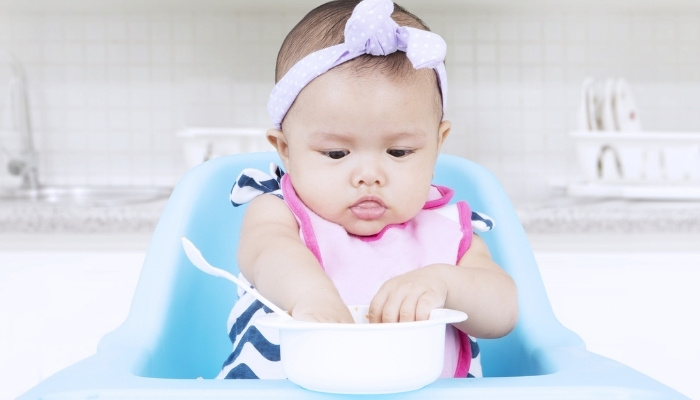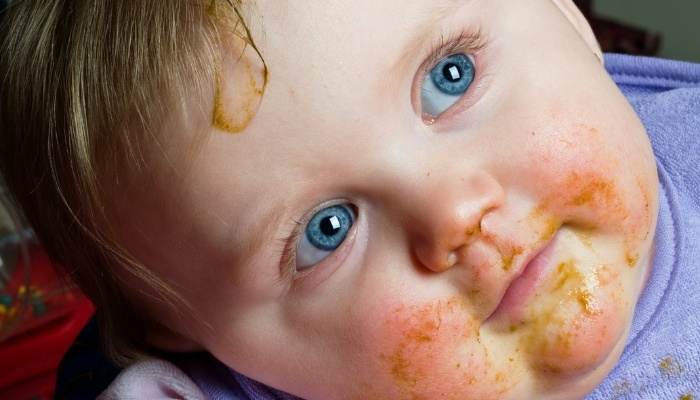The topic of when and how parents should introduce solid foods to their child has been a long-standing discussion.
Over the years, traditional weaning was considered the pediatric standard for this transition. Now, many parents are trying a different approach by allowing their children to take the lead.
Why baby-led weaning over purees? Parents may choose baby-led weaning over purees based on many factors, including developmental advantages and appetite regulation, but there are some situations in which purees are optimal for child success. Regardless, pediatricians agree that a nutritionally fulfilled child is what takes priority.
Keep reading to learn more about baby-led weaning, traditional weaning, and how the two should be used to support your child’s social and physical development.
BLW vs. Purees
With so much controversy surrounding infant feeding, we’ve compiled information drawing comparisons between the two most popular weaning methods: baby-led and purees.
What Is Baby-Led Weaning?
Baby-led weaning is a method in which the child leads the transition into solid foods.
Through self-feeding and self-regulating, children learn to manage their appetite and navigate mealtimes. This is a popular weaning method among younger parents.
Advantages of Baby-Led Weaning
Baby-led weaning has many advantages over traditional weaning with purees. It is typically more affordable, fosters independence, facilitates the development of motor skills, and teaches appetite regulation among other things.
Disadvantages of Baby-Led Weaning
Baby-led weaning also poses disadvantages when compared to traditional weaning with purees. For example, it’s a much messier process. You can reasonably expect to bathe your baby more often and go through a larger amount of wet wipes.
Additionally, baby-led weaning can lead to nutritional deficits. This can occur both out of parental negligence in meal planning and because a child may stop eating for a variety of reasons other than appetite satiation.
Traditional Weaning
Traditional weaning is a method in which the parent leads the child’s transition into solid foods. Through controlled feeding and regulating, children slowly grow accustomed to purees and work their way up.
This was the long-standing popular weaning method prior to the introduction of baby-led weaning.
Benefits of Traditional Weaning
Traditional weaning has its own share of benefits centering around parental control. This form of weaning means that a parent manages what a baby eats, how they eat it, and when they stop eating.
This means a child is bound to be nutritionally fulfilled, fed cleanly, and done eating when the meal is gone.
Disadvantages of Traditional Weaning
The largest caveat to traditional weaning is that children do not get the empowering sensory experience that baby-led weaning creates.
By not self-feeding, the child does not have authority over their own appetite, which can lead to over- or under-eating.
In addition, traditional weaning methods do not foster developmental motor skills in the same way nor does it allow for social development through family mealtimes.
Is BLW or Purees Better?
Many pediatricians and parents acknowledge that the baby’s nutritional needs being met is best in all circumstances. There is no one weaning method that truly outweighs the other.
Finding the method, or combination thereof, that fits with your child and family dynamic is the priority.

Consider a Combined Approach
There is no rule that says you can’t do both! Combining aspects of baby-led weaning with traditional methods can be a great option for some families.
For example, a working mom may find purees to be ideal for her schedule, but sitting down to feed the baby is not.
So, by combining the traditional use of purees with the baby-led concept of self-feeding this hypothetical mom found her perfect medium.
Perhaps another mom finds that she has time midday to feed her baby purees but prefers BLW when the entire family gathers for the evening meal.
Transitioning From Purees to Baby-Led Weaning
There is a natural progression that occurs for traditionally weaned children to transition to baby-led weaning in which they take a more authoritative role.
But don’t fret, the end goal of all weaning methods is a child who shows an interest in eating, feeds themselves, and has developed a healthy appetite.
When your child transitions from purees to solid foods, it should be gradual.
A pediatrician may recommend intermediary meals to assist your child with different textures and help them adjust. For example, adding oatmeal to the diet before adding pasta.
How To Decide if Baby-Led Weaning Is Right for Your Baby
There are some things to keep in mind when selecting which weaning style is right for your family. Consider the following:
- Parent’s Schedule: Traditional weaning is more time consuming than baby-led weaning, even more so if the parent is dedicated to making homemade purees. For parents with a busier schedule, this may not be a suitable choice.
- Parent’s Preference: Parents should contemplate what their priorities for their child’s nutrition are. If you want to reduce picky eating habits and encourage self-sufficiency, then baby-led weaning is the way to go. If your focus is on safe, controlled mealtimes, then traditional weaning is the better option.
- Child’s Interest: Does your child show an interest in feeding themselves? If the answer is yes, baby-led weaning may be the better option. If not, traditional feeding may be the way to go.
- Child’s Development: Is your child physically capable of sitting up in a seat, grabbing their food, bringing it to their mouth, chewing, and swallowing? These are completely necessary skills for baby-led weaning.
- Pediatric Recommendation: Your child’s pediatrician knows what’s best from a medical standpoint. This is especially significant if the baby has any underlying conditions that cause dietary restrictions, limitations, or special needs.
Related Questions:
What Age Should Babies Stop Drinking Formula?
Unless otherwise directed by a pediatrician, children should not stop drinking formula until after their first birthday. At this point, formula can be replaced with cow’s milk.
When Do Babies Self-Wean?
Each child has a different timeline when it comes to their nutritional development. Some babies attempt to self-wean from breastmilk or formula once they reach one year of age.
Others may show signs of weaning earlier or later. Regardless of when your baby shows signs of readiness, consult their pediatrician to make sure it’s an appropriate time for your child to wean.
Conclusion
Determining whether traditional weaning using purees or baby-led weaning is right for your family depends on the child’s developmental progress, interest in eating, age, and family lifestyle.
Talking to your child’s pediatrician is the best place to start when deciding how to integrate solids into your child’s diet.
Charley is a mother of three with a passion for raising good humans. With her children in tow, she studies English and has made a career creating content about motherhood. In her free time, she enjoys traveling within the states to kayak, camp, and hike.

